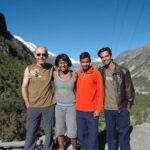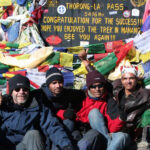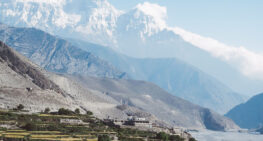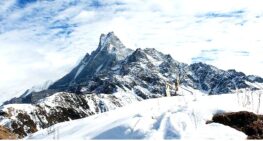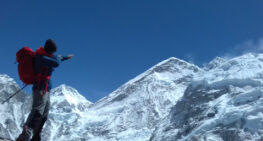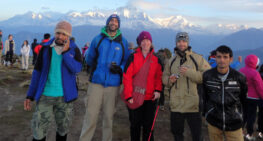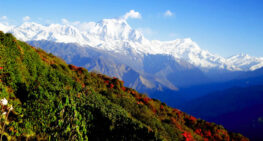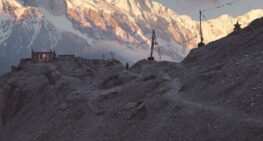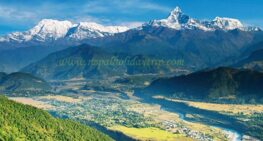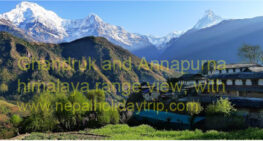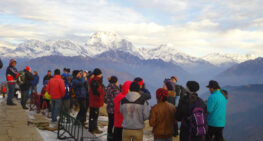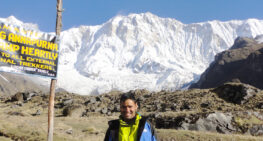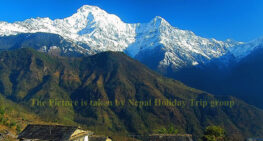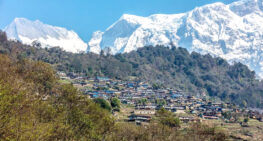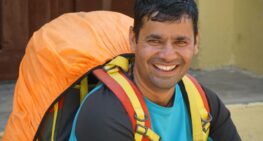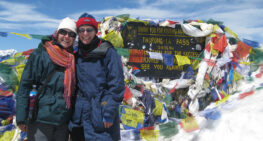Annapurna Circuit Trek, located around Nepal North Mid Western Himalaya within Manang and Lower Mustang region. our destination of this trip is crossing a high Thorang-La pass of above 5,416 m high. This is highest point of the adventure rewards you awesome views Annapurna Himalaya scenery of snow capped peaks.
Annapurna Circuit Trek, listed as world’s top most adventure destination where you will be walking within varied landscapes and temperatures from warm paddy fields and terrace farm village towards cool alpine zone within Buddhism religion of Tibetan culture where you can witness lovely villages of Dharapani-Timang-Chame and Pisang before reaching at Manang village.
Annapurna Round Trek, our path leads into beautiful woodland of rhododendron-oaks-pines-juniper and fir tree lines which soon fades as our journey proceeds to higher region around beautiful and scenic Manang valley, where tree lines disappear for short alpine bush and shrubs within high mountains.
Annapurna circuit trek enjoy the rich culture of Manang interwoven with Buddhism teaching visiting its old monasteries and traditional villages of immense interest, and then heading towards high Thorang-La pass to reach at holy Muktinath around Lower Mustang region trek.
From Muktinath walk leads on scenic Kaligandaki River valley following the trail through Jomsom town and Marpha beautiful villages, and then back into tree lines of coniferous woodland at Kalapani and Lete with views of Dhaulagiri-Tukuche-Nilgiris and Annapurna Himalaya.
From cooler alpine zone our adventure leads further downhill and into world deepest gorge of Kaligandaki to reach at Tatopani ‘hot spring’. Then heading uphill to Ghorepani Poon Hill for stunning sunrise over panorama of mountains within beautiful natural garden of rhododendron trees.
Finally, our walk leads at the end of trekking trail where a short drive takes you to popular city of Nepal Pokhara. we will stay by the Phewa lake of last overnight stop, where our magnificent and enjoyable Annapurna Circuit Trek finished.
S. N |
Cost Includes
- Annapurna Area Permit and Government Tax
- Trekking Equipments, Trekking Map of Annapurna
- Full Board Plan (Breakfast, Lunch, Dinner, Accommodation) during trek,
- Hotel in Kathmandu and Pokhara as your requirement.
- An experienced licensed holder Guide and required Porters
- Food, drinks, salary, equipment, transportation, accommodation, Medical kit box and local Tax for guide & porters,
- Transportation by flight, Tourist Bus and car, all necessary transportation while sightseeing
- TIMS (Trekkers' Information Management Systems)
- All guided sightseeing tour in Kathmandu
- Airports pick up and drop with an escort
cost excludes
- Lunch and dinner in Kathmandu
- Your travel insurance
- International flight and departure tax
- Any expense of personal nature
- Entry fees of World Heritage Sites of kathmandu
- Nepal entry visa fee US 100 (duration 90 days from date of issue)
- Any kinds of Bar bills
- Tips for guide and porter
